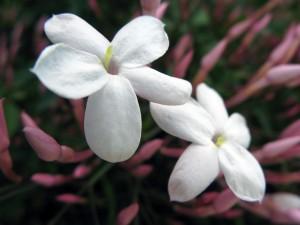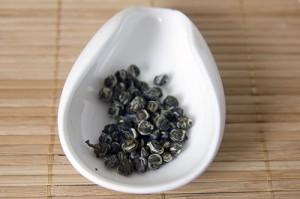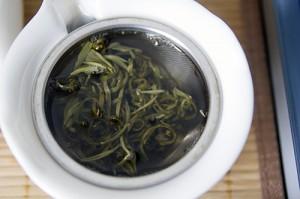Jasmine tea aka Xiangpian (香片) or ‘Fragrant Leaves’ is one of the best known and loved type of teas out there. From restaurants to tea houses, you will never be far away from a pot of jasmine tea.
What is jasmine tea?
Simply put, jasmine tea is a type of scented tea (huacha), more precisely the most common type of scented teas.
There has been a bit of confusion of what this means though.
In traditional scented tea, the base tea leaves are packed together with freshly bloomed jasmine flowers to absorb the natural aroma. The process is repeated from 3-7 times, depending on the grade of jasmine tea and in the final product all jasmine petals are removed- other than specific varieties such as Bitan Piaoxue.

- Blending, adding jasmine flowers to the tea and infusing together
- Using essential oils
Although the results pale in comparison to traditionally scented teas, the process is quicker, less skill is required and ultimately it is cheaper.
One way of identifying essential oils as opposed to ‘proper’ scenting is whether the fragrances fade when the tea is cold.
Alternatively, essential oils generally don’t retain the aroma beyond the second or third infusion while scented ones do.
The History
Jasmine tea is interesting in that it combines a plant that traveled from China to India (Camellia sinensis aka tea plant) with a plant that traveled from India to China (jasmine).
The jasmine flower (Jasminum sambac) is believed to have spread to China since the Han dynasty, more than 1,700 years ago. Some theorize that it was brought by Buddhist monks while others claim it was even earlier, having been brought by Persian merchants who came by sea.
The second theory would explain why Fuzhou was and still is the cradle of jasmine flowers in China, producing the best-regarded jasmine flowers in China since Fuzhou had been an early thriving port.
It was unclear when exactly jasmine tea was created but in Lu Yu’s Cha Jing (The Classics of Tea) written circa 780 AD, he referenced Fuzhou tea as such “Eight Min High Mountains (Produces) Teas with Tender Buds, on both shores of the Min River are Fragrant Jasmines”. Hence that shows jasmine tea has been around at least since the 8th century.
During the Ming Dynasty though, Wuyi overtook Fuzhou (western Fujian) in prominence and Fuzhou- together with jasmine tea- flirted with obscurity for a while.
However by the 19th century, jasmine tea experienced resurgence and was the favorite tea of the ruling elite and their brethren in Beijing and much of northern China.
This trend continues till today where if you speak to a ‘Lao Beijing’- one born and bred in Beijing- about his tea preference, jasmine tea would more often than not be their choice.
The Production
As mentioned, scenting tea is more complex than just throwing some petals into your bag of tea.
It is produced based on the twin nature of its ingredients- the scent absorbing nature of tea leaves and the scent emission nature of freshly bloomed flowers.

On the flipside of it, tea leaves can absorb pleasant scents as well.
The best regarded harvest period of jasmine flowers are from May to July. During harvest period, the flowers are picked in the day and by night time- usually from 8-10pm- they start to emit fragrances, peaking by midnight.
Within 48 hours the flowers wilt completely and have to be removed before then.
This is then repeated. For higher grades of jasmine tea, for every 1 kg of tea produced, at least 1.1 kg of jasmine petals have been used to scent in this manner.
The ambient conditions have to be favorable as well. Generally jasmine flowers do not emit fragrances below 20⁰C while at temperatures above 38⁰C onwards, the fragrances are less pleasing.
The relative humidity is also a factor. Below 70%, the flowers will wilt while a relative humidity of 80-85% is ideal.
The temperature and relative humidity also has to be coupled with an airy, well-ventilated environment.
Different Types of Jasmine Tea
The base used for producing jasmine tea is predominantly green tea, specifically baked green tea as it absorbs the fragrances better.
In recent years, with the popularity of white tea, jasmine white is also increasingly popular. The fragrance of jasmine adds a perfect foil to the subtleness of silver needles.

Jasmine green tea though has a wide range as well. From the commercial grade queshe (Sparrow tongue or 1 bud to 2 leaf) often found in Chinese restaurants to the higher grade Jasmine Pearls or Silver Tips (made predominantly from buds), there is a wide range to choose from.
Just don’t dismiss it as a run-of-the-mill blend or flavored tea.
See other articles related to varieties of green tea
Information pertaining to production and history have been researched from
福建茉莉花茶 by杨江帆 et al Published by Xiamen University Press
